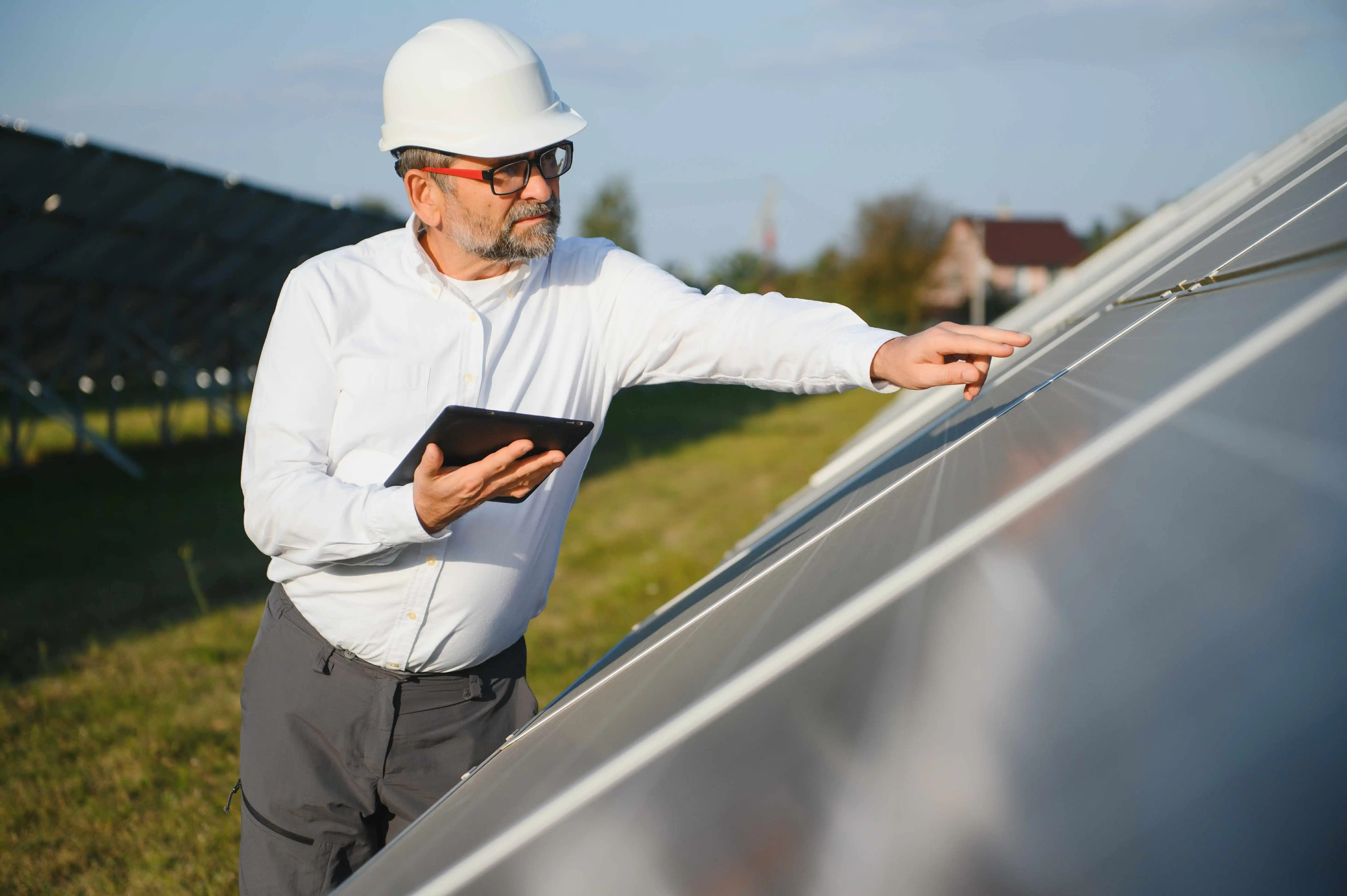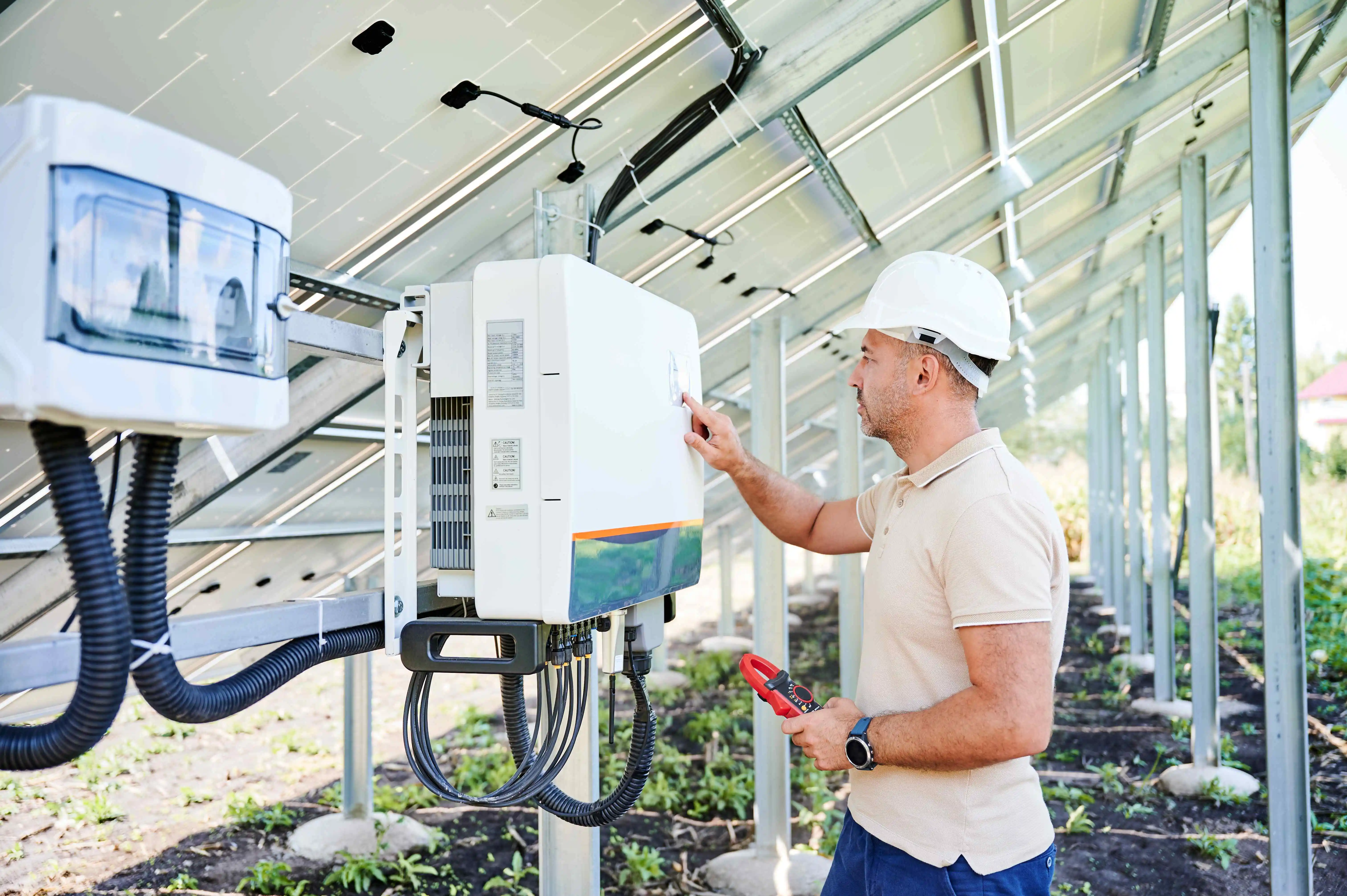Utilizing the power of solar energy is an investment in a sustainable and eco-friendly future. To ensure the enduring brilliance of your solar power system, a proactive approach to maintenance is paramount. Among the crucial maintenance practices, the spotlight falls on Solar Panel Inspection. This comprehensive guide unfolds the essential steps and insights required to conduct effective inspections, safeguarding the efficiency and longevity of your solar panels.
In the world of solar energy, knowledge is power, and a regular inspection regimen empowers users to detect potential issues, optimize performance, and extend the life of their solar power systems. From detecting surface damages to understanding the impact of shading and environmental factors, this guide navigates through the nuances of solar panel inspections. Armed with this knowledge, solar enthusiasts can embark on a journey to unlock the full potential of their investment and contribute to a sustainable energy landscape. Join us as we delve into the intricate details of conducting a solar panel inspection, ensuring your path to solar brilliance remains clear and efficient.
The Importance of Regular Solar Panel Inspections
Embarking on the journey of solar energy involves not just installation but a commitment to ongoing maintenance, with regular solar panel inspections serving as a cornerstone for sustained efficiency and performance. This section sheds light on why these inspections are paramount in ensuring the longevity and optimal functioning of your solar power system.
Regular solar panel inspections function as a proactive measure, allowing you to identify potential issues before they escalate. Think of it as gazing into the future of your solar investment, foreseeing challenges and addressing them promptly. These inspections serve as a diagnostic tool, revealing any cracks, damages, or wear and tear that might compromise the effectiveness of your solar panels.
Beyond mere visual inspection, a comprehensive solar gaze involves delving into the electrical components. Ensuring connectivity and functionality of these elements is crucial for harnessing the maximum potential of solar energy. It’s akin to tuning an instrument – the better the connectivity, the more harmonious the energy production.
Shading can cast shadows on the efficiency of solar panels, disrupting the absorption of sunlight. Solar gazing involves understanding how shading impacts your panels and devising strategies to mitigate these effects. By identifying shading patterns during inspections, you can optimize the placement of your panels for uninterrupted sunlight absorption.
Dust and debris accumulation on solar panels can act as a dimming filter, hindering their performance. Regular solar gazing includes clearing this path for solar energy, implementing effective cleaning techniques as part of the inspection routine. This ensures your panels remain pristine, absorbing sunlight without hindrance.
In essence, solar gazing is not a passive act but an active involvement in the health and efficiency of your solar power system. It’s about staying ahead of potential issues, adapting to environmental changes, and maintaining a clear path for solar brilliance. By incorporating regular solar panel inspections into your routine, you’re not just a solar enthusiast; you become a vigilant guardian, ensuring your solar investment continues to shine brightly for years to come.
Detecting and Addressing Solar Panel Damage
The resilience of solar panels against the elements is undeniable, but over time, exposure to diverse weather conditions can lead to wear and tear, making the detection and addressing of solar panel damage a critical aspect of maintenance. Let’s delve into the intricacies of identifying potential issues and the proactive steps to address damages, ensuring your solar power system stands the test of time.
Surface Examination
The surface of solar panels is exposed to the elements, making it susceptible to damages. During solar panel inspections, a meticulous examination of the surface is the first line of defense. Look for cracks, scratches, or discolorations, as these can indicate underlying issues. Small cracks may seem innocuous, but they can escalate, compromising the structural integrity of the panel. Surface examinations serve as the frontline strategy in addressing damages promptly.
The Stealthy Threats
Hotspots are localized areas of elevated temperature on solar panels, often resulting from partial shading or manufacturing defects. Though not immediately visible to the naked eye, thermal imaging during inspections can unveil these stealthy threats. Addressing hotspots promptly is crucial as they can lead to decreased energy output and, in severe cases, damage to the solar cells. Early detection allows for targeted interventions to prevent further deterioration.
Addressing solar panel damage involves a multi-faceted approach. Small cracks can be sealed with specialized materials, preventing moisture ingress that could exacerbate the issue. In the case of irreparable damages, timely replacement of the affected panel ensures the continued efficiency of the entire solar power system.
In the realm of solar panel inspection, addressing damages promptly is akin to healing wounds before they fester. By incorporating surface examinations and understanding material wear and tear patterns, you actively engage in the preservation of your solar investment. This guide equips you with the knowledge to be a vigilant guardian, ensuring your solar panels stand resilient against the tests of time and continue to contribute to a sustainable energy future.

A Step-by-Step Inspection Process
Embarking on a step-by-step solar panel inspection process is akin to conducting a symphony, each phase harmonizing to ensure the continued brilliance of your solar power system. In this section, Al Sabah unveils the secrets to a comprehensive inspection, guiding you through each step for optimal solar panel longevity.
1. Visual Appraisal
The inspection begins with a visual appraisal of the solar panels. Scrutinize the surface for any signs of damage, including cracks, chips, or discolorations. This step acts as a preliminary assessment, allowing you to identify potential issues that might affect the overall efficiency of the panels. Visual appraisal sets the stage for a deeper dive into the solar panel’s health.
2. Electrical Connectivity
Moving beyond the surface, delve into the electrical components of the solar panels. Check for any loose connections, damaged wiring, or disruptions in connectivity. Efficient electrical pathways are vital for the seamless conversion of sunlight into energy. This step ensures that your solar panels are not just visually intact, but also functionally optimized.
3. Sunlight’s Path Unobstructed
Solar panel efficiency is intricately linked to unobstructed access to sunlight. During the inspection, analyze the shading patterns that might impact the panels. Whether from nearby structures, vegetation, or other obstructions, understanding shading dynamics allows you to optimize the positioning of your solar panels for maximum sunlight absorption.
4. Cleaning and Maintenance
As a final step, incorporate cleaning and maintenance into your inspection routine. Clearing the surface of dust, debris, and environmental pollutants ensures that the solar panels maintain their pristine condition. Regular solar panel cleaning not only enhances the visual appeal but also contributes to unhindered sunlight absorption, maximizing energy production.
Embark on this step-by-step solar panel inspection process to become a guardian of solar brilliance. By visually appraising, checking electrical connectivity, analyzing shading patterns, and incorporating cleaning, you actively contribute to the sustained efficiency and longevity of your solar power system. This guide empowers you to orchestrate a symphony of solar energy, ensuring your panels continue to shine bright for years to come.
Seasonal Symphony: Tailoring Inspections to Weather Patterns
Conducting solar panel inspections is not a one-size-fits-all endeavor; it’s a seasonal symphony, harmonizing with the nuances of weather patterns. In this guide, Al Sabah explores the importance of tailoring your inspections to the seasons, ensuring your solar panels withstand the varied elements and continue to perform optimally throughout the year.
Spring
As nature awakens in spring, so does the need for renewed vigilance in solar panel inspections. This season heralds a time of renewal and growth, making it essential to clear any accumulated debris from winter storms. Spring inspections focus on assessing the impact of the colder months and preparing the panels for the sun-drenched days ahead.
Summer
Summer, with its abundant sunlight, calls for a thorough peak performance check. During this season, solar panels are expected to operate at their maximum efficiency. Inspections delve into electrical connectivity, ensuring that the panels are harnessing the sun’s rays with optimal effectiveness. Additionally, shading analysis becomes crucial, given the longer days and potentially changing obstructions.
Autumn
Autumn brings a transition in weather patterns, and inspections during this season prepare the solar panels for the impending changes. Assessments focus on the wear and tear incurred during the summer and address any potential issues before the colder months set in. Cleaning and maintenance play a vital role in preserving the panels’ efficiency as they navigate the transition from warm to cooler temperatures.
Winter
Winter poses unique challenges, from snow accumulation to colder temperatures. Inspections during this season are geared towards fortifying the solar panels against these challenges. The focus shifts to assessing the impact of winter weather on the panels and implementing measures to ensure continued functionality, even in the face of adverse conditions.
Tailoring solar panel inspections to weather patterns is a strategic approach to maintaining optimal efficiency. By embracing the seasonal symphony, you empower yourself to proactively address challenges and fortify your solar panels against the varied elements. This guide ensures that your solar power system remains resilient, delivering sustained performance throughout the ever-changing seasons.

Inspection Logbook
In the orchestration of solar panel maintenance, keeping a meticulous inspection logbook is akin to composing a symphony of sustainability. This guide delves into the significance of maintaining a comprehensive inspection logbook, not only for the health of your solar panels, but also as a strategic tool for safeguarding your solar investment.
Al Sabah takes pride in structured documentation, and maintaining an inspection logbook aligns seamlessly with this commitment to excellence. Each inspection is meticulously recorded, detailing visual appraisals, electrical connectivity checks, shading analyses, and cleaning and maintenance routines. This structured documentation serves as a comprehensive record of the solar panel’s health over time.
The inspection logbook acts as a treasure trove of data, facilitating trend analysis over the lifespan of your solar panels. Our approach involves not only documenting findings, but also analyzing patterns. Trends may reveal recurring issues during specific seasons or highlight the efficacy of implemented solutions. This proactive approach ensures that your solar investment is continually optimized for peak performance.
In the symphony of solar power, the inspection logbook collaborates harmoniously with solar battery maintenance. By integrating records of solar panel inspections with insights into battery performance, Al Sabah ensures a unified approach to solar system health. This collaboration aids in identifying correlations between solar panel conditions and battery longevity, allowing for targeted maintenance strategies.
We envision a future where solar power systems operate at peak efficiency, contributing to sustainable energy practices. The inspection logbook is a cornerstone of this vision, empowering users with the data needed to implement proactive maintenance strategies. By understanding the unique needs of solar panels and batteries, Al Sabah’s structured approach guarantees a harmonious symphony of solar power sustainability.
In conclusion, the inspection logbook serves as a vital instrument in tracking the health of your solar investment. Our dedication to structured documentation, trend analysis, collaboration with solar battery maintenance, and proactive strategies ensures that your solar power system operates at its best, creating a sustainable and enduring impact.





